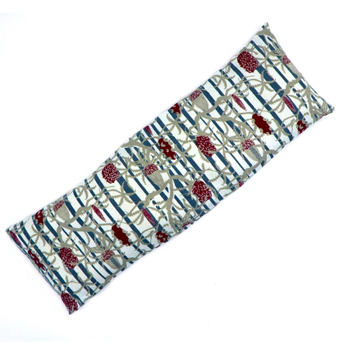Applying a heat pack or cold pack to the body after an injury or when we are in pain is a widespread practice.
In this post, we are going to look into Heat Pack.
What is a Heat Pack?
A Heat Pack is a heat source, most often made from a fabric bag containing grains (like wheat or barley) that get placed in the microwave for 1 or 2 minutes (or till it is warm enough).
What are the benefits of a Heat Pack?
- Stimulate the blood flow around the painful or restricted area.
- Improve mobility
- Pain Relief

How does a Heat Pack work?
When applying an H.P., the blood vessels beneath the tissue dilate, consequentially increasing blood flow.
As a result, more healing elements such as oxygen, vitamins, minerals and so on can reach the area needing attention.
On the other hand, heat is a short-term solution for releasing tensions.
In the longer-term, massage therapy such as Remedial Massage, Thai Massage, Myotherapy, or MLD would be recommended.
I still recommend that my clients use the heat pack momentarily and occasionally, even after the treatment, when they present with a poor Range Of Motion.
For how long should I use it?
15 to 20 minutes at a time is enough.
Why not for longer?
Firstly you can burn your skin. That’s even why as a massage therapist, I recommend anyone to place a towel over the skin before applying a heat pack.
Secondly, with a heat source, as the vessels stay dilated for a long period of time, more inflammatory cells can reach the sore area.
This would make the situation worst than better.
What type of HP are there?
- Fabric one staffed with grains.
- Heat patch
- Hot Bottle
- Wet bag
The wheat bag is most often found in clinic settings.
Are bags containing a gel, and it sits all the time in hot water.
For home use, a fabric one does the job.
You can heat it in the microwave or the oven.
In any case, handle it with care, as it can get really hot.
When to use and heat pack?
- You have low-level pain, like 1 to out of 10
- You have joint stiffness and pour mobility
- You have muscle tightness that limits your mobility